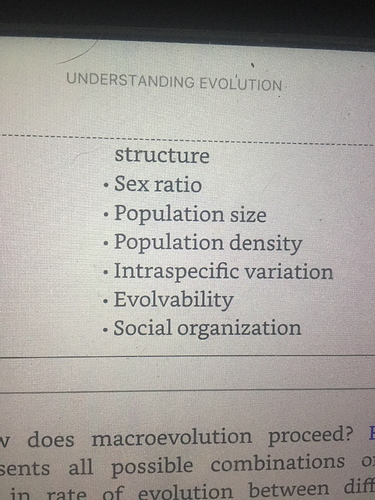How do you best explain that the fossil record looks more like a bunch of vertical lines than like a bush (correct me if I’m wrong)? Even though we now have evidence of a lot of transitional forms?
I’m looking for resources, such as journal articles (preferably open source or Science/Nature) or blog posts, to try to ‘straighten this out,’ pun intended, and help would be appreciated.
I know that punctuated equilibrium is one potential explanation: Evolution happens in small populations and is thus unlikely to be picked up in the fossil record, and once the new population grows big enough that it is likely to be picked up in the fossil record stasis has returned? I’ve read the original '72 piece but I don’t know the current state of the research there.
Is another explanation that evolution just happens much faster than neo-Darwinism/modern synthesis implies? And that absent selection-inducing events such as climate change or new predators or whatever, populations are prone to stasis because beneficial mutations get washed out in large populations? Are those plausible reasons? Am I missing any big/obvious other reasons?
I’d like to understand this better myself but also be able to explain things well to open-minded non-scientists, but have my explanations grounded in up-to-date research. Any help would be appreciated. Thank you!
Evolution does not happen in a smooth even manner, because evolution is guided by ecology. As I expect you know, over time there have been some been some dramatic extinction events, caused by ecological changes, whereby many species became extinct because they lost their habitat.
These were followed by the development of new species of flora and fauna which grew out from those who were able to adapt to the new environments This explains the shape of the Tree or Bush of Life. .
The conditions for making fossils are a rare event. Most are going to be fossils of species with large populations. However when you have large populations the gene pool is very stable and changes very little. Most evolution logically occurs in small populations on the brink of extinction when variations have a large impact on the gene pool and natural selection is at its highest.
But with that said… Your description is far from accurate. In the big picture it is VERY much like a bush or tree. It is only when you are looking for excuses to ignore this rather obvious tree-like character of the fossil record that you then focus on the small scale trying desperately to see only the trees rather than the whole forest.
Analogies might help. For example, the hammer you see in a modern hardware store is largely the same hammer people were using more than 100 years ago. Why hasn’t the hammer changed much in that time? Because it works.
There are groups of species that are like hammers. Their adaptations to certain niches are so effective that they don’t need to change.
Thank you for pointing out the inaccuracy, and for the succinct yet comprehensive explanation. And thank you everyone who has commented so far. I am finding this helpful.
Fortunately we now have another much richer source of information – the genetic code. There we have a rather detailed tree-like structure where we can calculate when the common ancestor of any two species existed. In that case we only need to check that the results matches in those cases where there is fossil evidence to be found. The newest fossil hunt, however, is for fossils which have genetic data themselves. These go a very long way in making our picture of the evolutionary tree much more precise. For example, this is behind the newest discoveries which tell us how much of the neanderthal and denisovan genomes are found in the different human populations around the world.
Stasis in geology, i.e. fossiliferous, metamorphic and igneous rock, is where the music stopped in musical chairs. Most of the time stuff is on the move.
Some reasons for stasis:
the most obvious ones are large population size and strong stabilizing selection for fitting into a particular ecological niche. Note that morphology can be stable while the DNA keeps changing (because mutations are unavoidable, because perfect DNA replication is impossible because molecular reactions are noisy and DNA error-checking mechanisms take energy and time so there will always be a be a tradeoff between accuracy and efficiency).
Things like large body size also play a role.

